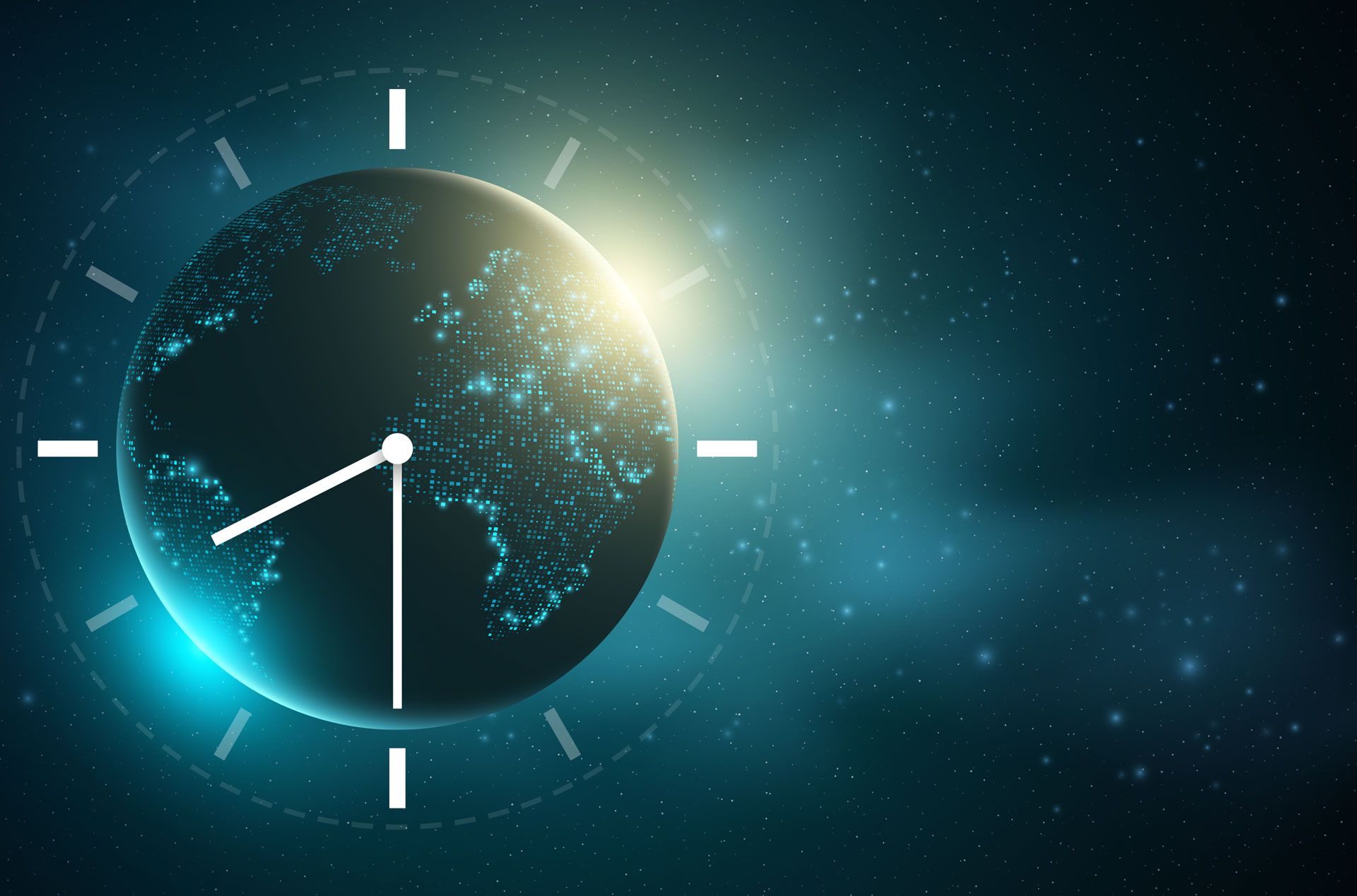
Coordinated Universal Time: An overview


Patrizia Tavella, Director, Time Department, BIPM
Coordinated Universal Time (UTC) is the worldwide reference time scale computed by the Bureau international des poids et mesures (BIPM) − the international organization dealing with matters related to measurement science and measurement standards.
UTC is based on about 450 atomic clocks, which are maintained in 85 national time laboratories around the world.
The clocks provide regular measurement data to BIPM, as well as the local real-time approximations of UTC, known as UTC(k), for national use (see figure).
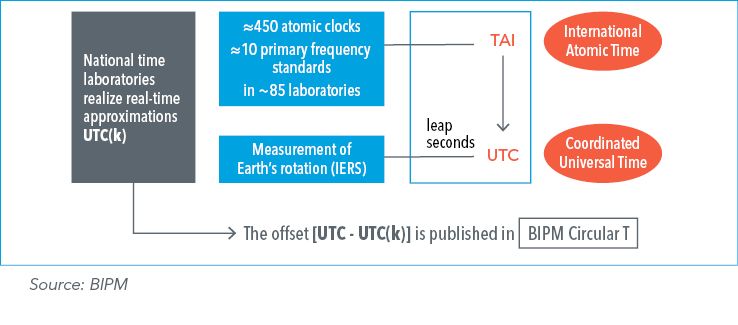
The scale unit, the second, and the reference time scale UTC are defined and realized under the authority of the General Conference on Weights and Measures (CGPM), where 64 Member States and 36 Associate States and economies are represented.
The International Earth Rotation and Reference Systems Service (IERS) determines and publishes the difference between UTC and the Earth rotation angle indicated by UT1. Whenever this difference approaches 0.9 seconds, a new leap second is announced and applied in all time laboratories.
UTC and the UT1‑UTC difference are transmitted by several time and frequency services regulated by the ITU Radiocommunication Sector (ITU–R — one of three Sectors of the International Telecommunication Union).
How BIPM obtains UTC
BIPM first computes a weighted average of all the designated atomic clocks to achieve International Atomic Time (TAI). The algorithm for computing TAI is complex, involving estimation, prediction and validation for each type of clock.
Similarly, measurements to compare clocks at distance are based either on global navigation satellite systems (GNSS) or on other techniques, such as two-way satellite time and frequency transfer, or via optical fibres. These all need to be processed to compensate for the delay due, for example, to the ionosphere, the gravitational field, or the movement of satellites.
Ultimately, UTC is obtained from TAI by adding or removing a leap second as necessary and maintaining the same ticking of the atomic second.
UTC’s alignment with Earth’s irregular rotation
In the 1970s, at the beginning of the atomic clock era, it was agreed that UTC be kept in alignment with the irregular rotation of the Earth, as UTC allowed an estimation of the Earth rotational angle UT1 with a 0.9 second tolerance. This was largely required for navigation systems based on celestial observations. At the outset, UTC was corrected in very small time and frequency steps. From 1972 onward, entire leap seconds were used (see figure).
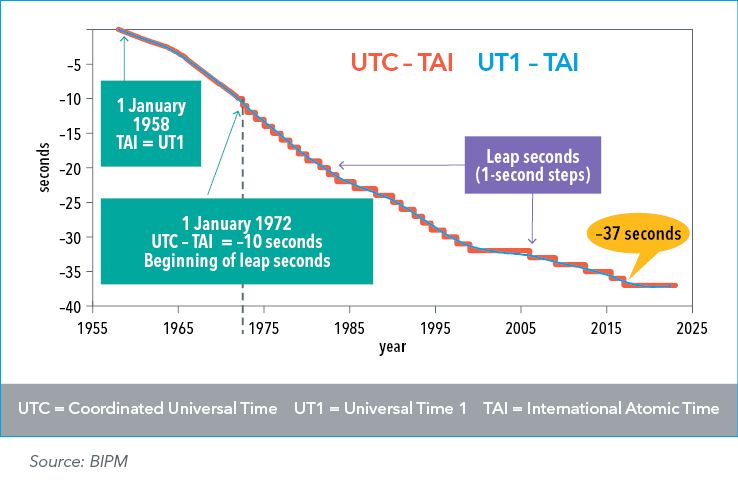
Tech companies using leap-second alternatives
The application of the leap second follows the sequence of second labelling as shown below. An inserted leap second is labelled as 23:59:60 — a clock-time unforeseen in most modern, digital systems.
This discrepancy caused the proliferation of ad hoc methods that are increasingly being used as alternatives to the leap second.
Google for example “smears” the additional second over the previous 24 hours, Facebook over the subsequent 18 hours, Microsoft over the last two seconds, and Alibaba over an interval of 24 hours centred on the leap second.
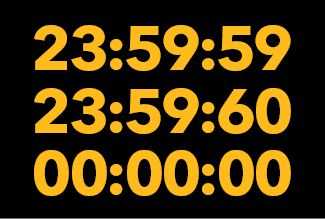
Risks associated with leap seconds
From the perspective of managing complex systems, the application of the leap second on all satellite clocks at the same instant is a risk. This is why most global navigation satellite systems (excluding GLONASS) opted to synchronize their clocks and time scale with UTC at the outset, without adding any leap seconds.
Today, consequently, GPS time is ahead of UTC by 18 seconds. The same applies for Galileo time, while BeiDou time is ahead by four seconds (see figure).
This situation causes confusion among users on the day a leap second is applied. It also gives rise to concerns about the risk of anomalies that could undermine the reliability of critical national infrastructure.
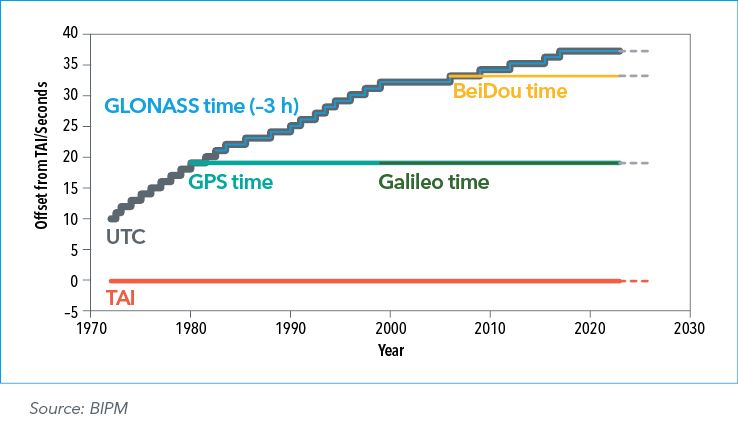
Keeping UTC in alignment with Earth’s rotation
The 27th meeting of the General Conference on Weights and Measures, held in November 2022, decided to maintain the existing process to keep UTC in alignment with the Earth’s rotation. The decision, however, envisages a larger tolerance limit than nine tenths of a second — with correspondingly larger but less frequently needed adjustments — to guarantee UTC’s continuity for at least the next 100 years.
BIPM is currently working with ITU–R and other organizations on a new process, expected to come into force in 2035. This would include a newly identified tolerance value for the UT1‑UTC offset, to ensure UTC remains efficient and effective in serving current and future timing applications.
This article first appeared in ITU News Magazine: The future of Coordinated Universal Time – part of a series of editions on topics to be discussed at the World Radiocommunication Conference (WRC-23), from 20 November to 15 December in Dubai, UAE.
Download your copy of the ITU News Magazine: The future of Coordinated Universal Time.
Header image credit: Adobe Stock
